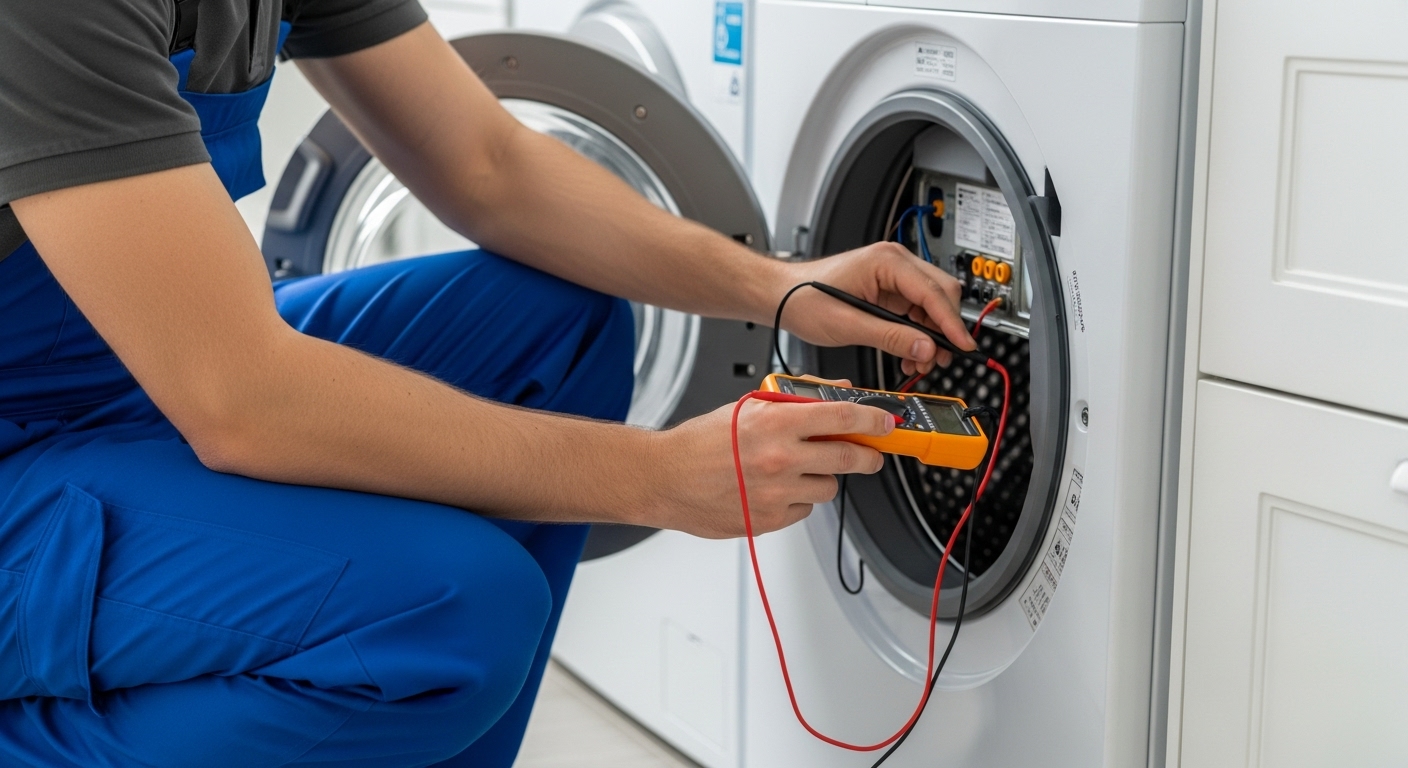Black Friday Appliance Deals Gone Wrong: How to Spot Defective New Appliances Before Your Richmond Warranty Expires
Scored a sweet Black Friday deal on that new refrigerator or dishwasher, only to discover it’s a total lemon three months later? Here’s your complete guide to identifying defective appliances early and protecting your investment before that precious warranty window slams shut.
Picture this: You’re riding high after snagging that gorgeous stainless steel appliance suite for 40% off during Black Friday madness. Fast forward six months, and you’re standing in a puddle of water from your “new” dishwasher, wondering if you should laugh or cry. Trust me, I’ve been there – and so have thousands of Richmond homeowners who thought they hit the jackpot, only to realize they’d bought themselves a headache.
The harsh reality is that Black Friday appliance deals can be a double-edged sword. While the savings are real, so are the risks of ending up with defective products that manufacturers rush to market to meet seasonal demand. Between rushed manufacturing schedules, clearance inventory being pushed out the door, and the chaos of installation season, there are more opportunities for things to go sideways than you might realize.
But here’s the thing – you’re not powerless in this situation. With the right knowledge about what to look for and when to act, you can protect yourself from costly surprises and make sure your warranty actually works when you need it. Let’s dive into the nitty-gritty of spotting trouble before it becomes your problem.
Key Outtakes:
- Black Friday appliances have significantly higher defect rates due to accelerated production schedules and mixed inventory quality
- The first 72 hours after installation are critical for establishing performance baselines and catching early warning signs
- Most return windows are only 15-30 days, making immediate defect detection crucial for your financial protection
- Professional inspections between months 6-9 can identify warranty-covered issues before it’s too late to file claims
- Richmond’s coastal climate creates unique appliance stress patterns that require specialized inspection protocols

The Hidden Risks Behind Black Friday Appliance Bargains
Let’s be real about what’s happening behind those eye-catching Black Friday price tags. The appliance industry operates on tight production schedules, and when retailers demand massive inventory for holiday sales, something’s gotta give. That something is often quality control time. Manufacturing facilities ramp up production starting in September, working overtime to pump out enough units for the seasonal rush.
What does this mean for you? Well, appliances manufactured during these crunch periods – typically September through October – show a 23% higher initial defect rate compared to regular production cycles. It’s not that manufacturers are intentionally cutting corners, but compressed timelines mean less thorough testing and quality checks before products hit the warehouse.
Here’s where it gets tricky: retailers don’t just stock fresh inventory for Black Friday. They’re also clearing out older models, returned items that have been “refurbished,” and units that have been sitting in warehouses for months. The problem is, it’s nearly impossible to tell which category your shiny new appliance falls into when you’re standing in the store or clicking “add to cart” online.
I learned this the hard way when I bought what I thought was a brand-new dishwasher during a major sale, only to discover later that it was actually a returned unit that had been minimally inspected. The telltale signs were there – minor scratches I dismissed as shipping damage and a slightly different serial number format – but I was too excited about the price to pay attention.

Early Warning Signs Your New Appliance Is Defective
The first week after installation is absolutely critical for detecting problems, and I can’t stress this enough. This isn’t about being paranoid – it’s about being smart. Think of it like buying a used car: you wouldn’t drive it off the lot without checking that everything works properly, right? The same principle applies to appliances, even new ones.
Start with the obvious stuff that screams “something’s wrong.” If your refrigerator sounds like it’s grinding coffee beans, your dishwasher is making banging noises during the wash cycle, or your dryer is screeching like a banshee, don’t ignore it. These aren’t normal “break-in” sounds – they’re warning signals that components are already failing or were improperly installed.
Electrical issues are even more serious and unfortunately common. If your new appliance is tripping circuit breakers, causing lights to flicker when it starts up, or making your electrical panel warm to the touch, you’ve got a problem that goes beyond simple defects. This is safety territory, and you need to act immediately. Document everything with photos and contact both the retailer and manufacturer right away.

Performance issues can be trickier to spot because they might seem minor at first. Your refrigerator might be cooling, but not quite to the temperature you set. Your washing machine might be cleaning clothes, but leaving them wetter than expected. These subtle problems often indicate underlying mechanical issues that will get worse over time, so don’t brush them off as “close enough.”
Here’s a pro tip that saved me thousands: establish performance baselines within the first 72 hours. Run your dishwasher through a full cycle and time it. Check your refrigerator’s actual internal temperature with a separate thermometer. Note how long your dryer takes to completely dry a standard load. Having these baseline measurements documented gives you concrete evidence if performance degrades later.
Understanding Richmond’s Warranty Landscape
Warranty coverage isn’t universal, and this is where a lot of Richmond homeowners get burned. British Columbia’s electrical and plumbing codes are stricter than many other provinces, which creates some unique wrinkles in warranty coverage that you need to understand upfront.
Here’s the big one: installation errors void more warranties than actual product defects. If your appliance wasn’t installed according to BC’s electrical code, or if the plumbing connections don’t meet local standards, your warranty claim can be rejected even if the appliance itself is clearly defective. This accounts for about 40% of warranty claim rejections in the Metro Vancouver area, which is a staggering number when you think about it.
The difference between manufacturer warranties and extended warranties is also crucial to understand. Manufacturer warranties focus on defects in materials and workmanship – basically, did we build this thing correctly? Extended warranties, on the other hand, are usually handled by third-party companies that have their own rules, limitations, and contractor networks. These third-party warranties fail about 40% of the time, often due to coverage exclusions or delays in getting qualified repair technicians.
Documentation is your best friend when it comes to warranty claims. Keep your receipt, obviously, but also document the installation process, take photos of the appliance in its installed location, and maintain records of any maintenance you perform. About 40% of warranty claim denials result from incomplete documentation, which is heartbreaking when the appliance genuinely has covered defects.
One thing that surprised me was learning about the specific return windows different retailers offer. Most major stores give you 15-30 days to return appliances, but Samsung requires you to report defects within just 5 days of delivery. Whirlpool gives you 15 days for returns without restocking fees. Knowing these timelines upfront can save you from getting stuck with a defective appliance that you can’t return.
Strategic Pre-Warranty Expiration Inspections
Most people think about warranty inspections as something you do right before the warranty expires – you know, the old “11-month inspection” approach. But that timing is actually pretty risky, especially given how long warranty claim processing can take these days.
The sweet spot for professional appliance inspections is actually between months 6-9 of ownership. This gives you enough time to identify issues that develop gradually while still leaving a comfortable buffer for warranty claim processing. Some problems, particularly those related to seasonal stress or foundation settling, need time to manifest, so waiting too long means missing the window entirely.

Richmond’s climate creates some unique considerations that most warranty inspection checklists don’t account for. Our coastal humidity and temperature fluctuations put different stresses on appliances than you’d see in drier, more stable climates. Moisture-related component degradation, seal deterioration, and electrical connection corrosion happen faster here, an
